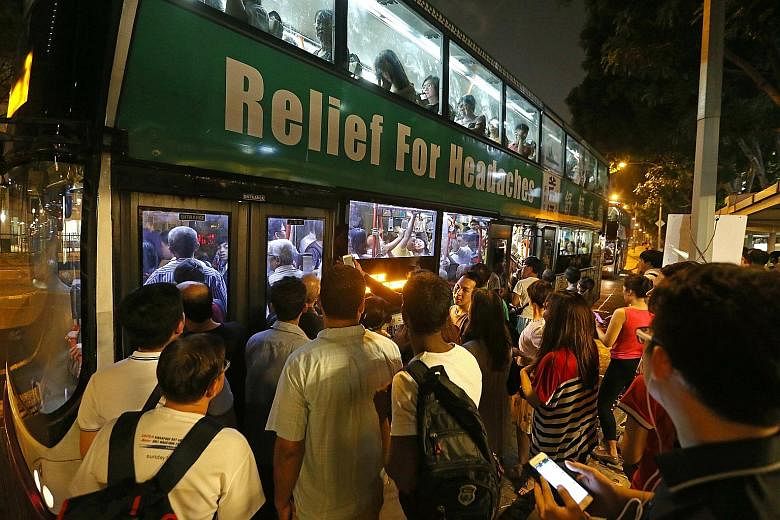After train services broke down along two major MRT lines on Tuesday night, commuters found that buses could do little to help them with their journeys.
It was a case of too little, too late, and the breakdown only added to the woes of those relying on buses to get home.
Human resource executive Yvette Cheng, 26, said: "They should have more targeted services for train commuters."
She waited nearly an hour at the Ang Mo Kio bus interchange for a bus to go home. She lives in the Thomson area.
Web developer Sunny Wong was on the way to Jurong East when his train got stuck at Tiong Bahru.
"I waited outside the bus stop area until I gave up; I couldn't even get into the stop. The buses were also packed. I tried waiting for the crowd to disperse but it never did."
The 28-year-old left after half an hour, and eventually hopped into a cab after walking around the area.
Both the North-South and East-West MRT lines were down for more than two hours from about 7pm on Tuesday.
Extra buses were added to existing services to alleviate the situation, but many were still stuck.
However, bus bridging services were not activated.
This meant that there were no additional buses to ferry commuters directly from one station to another. Bridging services are usually put in place when disruptions are between a few affected stations.
An SMRT spokesman said yesterday that there was no such shuttle service because all available bus resources were sent to "enhance regular bus services" to help affected commuters.
SMRT also sent many staff to manage the crowds at the stations and interchanges. SBS Transit's senior vice-president of corporate communications Tammy Tan said it deployed more than 100 extra buses and about 250 more staff to help during the breakdown.
National University of Singapore transport researcher Lee Der Horng said that the way buses were deployed could be improved.
Professor Lee said: "The additional buses should operate in a similar way as the trains and should only stop at the stations.
"In such a situation, it is important to provide a substitute in lieu of the MRT... If the buses stop at every stop, it will burden the traffic conditions even more."
One cannot expect buses to be as efficient as the MRT though, he added. "The train load is more than 1,000 during peak hours, but a bus can only take about 100."
UniSIM transport expert Park Byung Joon noted that the scale of the breakdown was unprecedented and that a normal contingency plan could not have handled it.
MP Lim Biow Chuan, who is on the Government Parliamentary Committee for Transport, said that the "ideal situation" is to minimise breakdowns.
"It's not quite possible to have a huge reserve of buses on standby, waiting for the possibility of a breakdown to happen.
"Two major lines were completely down, and I'm not sure if anything could be done to mitigate the effects of a breakdown of such magnitude."

